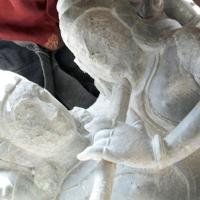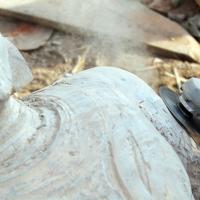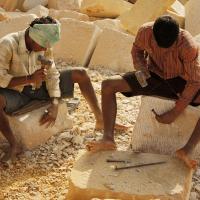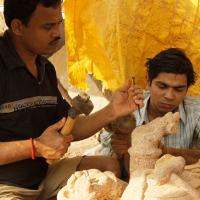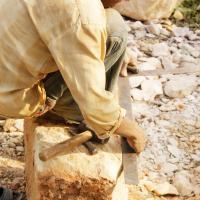Design Gallery
Orissa Stone Carving
by
Stone carving is a traditional of Orissa as is evident from the innumerable archeological monuments, rock-cut sculptures, caves, and temples built and has been practiced for centuries. The huge repertoire of stone carving is best revealed in the architecture and rock cut sculptures of Lingraja, Jagannath, Mukteshwara and other temples of Orissa. Other noteworthy monuments include the temple chariot of the Sun God at Konark, Stupas of Ratnagiri and Udaygiri. There are ‘Apsaras’, the heavenly beauties playing different musical instruments carved on the Konark Wheel. The products include book rests, ashtrays, paperweights; candle stands, kitchenware, and other products are also made. The magnificent temples of ‘Parsurameswar’, ‘Mukteshwar’, ‘Lingraja’, ‘Jagannath’ and ‘Konark’ is the progeny of the artisans who built these temples. Besides the beautiful Stupas and Monasteries of LalitagiriRatnagiri and Udayagiri have kept alive the traditions of their forefathers.
India has a vast resource of different types of stones and the artisans of Orissa are at complete ease while working with them. Tools such as hammers and chisels known as ‘Muna’, ‘Patili’, ‘Martual’ and ‘Nihana’ in local parlance are enough to carve the ultra soft soapstone or Khadipathara. Unlike sculptors of other places, the artisans of Orissa are at home with a variety of materials. They handle the ultra soft white soapstone with equal facility as the slightly harder greenish chlorite or ‘Kochilapathara’ and the still harder pinkish Khandolite and the hardest of all the black granite ‘Mugunipathara’ by just using tools like hammer and chisel. Whether the stone is hard or soft the outline is first drawn on the stone and then is accordingly cut. The motifs used are not uncommon and the carvings on the temples also provide models.
For more details:
https://dsource.in/resource/orissa-stone-carving

